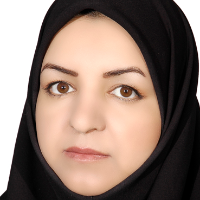Investigating of yield and yield components response of guar to intercropping with roselle under different levels of nitrogen
Author(s):
Article Type:
Research/Original Article (دارای رتبه معتبر)
Abstract:
Introduction
Guar is an annual plant that tolerates salinity and drought from the legume family, which can be used as an alternative product in low water plains. Considering the characteristics of the guar, such as having the ability to biologically nitrogen fixation and a relatively deep root system, high adaptability to drought and poor soils, high competitive power and favorable morphology, it seems that placing it in intercropping cultivation, it can increase the efficiency of final yield of intercropping crops. Utilizing the intercropping system for plants, is an effective measure to improve soil fertility, increase the absorption of nutrients and improve the efficiency of water consumption, and it is considered one of the most important scientific methods to help maintain the stability and balance of the living system of the soil. Therefore, this research was carried out with the aim of comparing different patterns of intercropping cultivation of guar next to the roselle with its pure cultivation at different levels of nitrogen fertilizer in field of Toos Planting Manager Company in Taybad city, located in Polband plain.Materials and Methods
The experiment was performed as a split plot in the form of a randomized complete block design with two factors and in three replications. The first factor included eight ratios of mixed crops, which were implemented as follows: sole cultivation of guar, one row of guar + one row of roselle, two row of guar + one row of roselle, three row of guar + one row of roselle, one row of guar + two row of roselle, one row of guar + three row of roselle, two row of guar + three row of roselle and Three row of guar + two row of roselle. The second factor included nitrogen fertilizer, based on recommendation of the soil laboratory, at three levels: without giving nitrogen fertilizer (zero kg per hectare) and 50 and 100 percent of guar's requirement for nitrogen, one half at the time of planting and the other at the time of pod formation.Results and Discussion
The results indicated a significant superiority of sole cultivation of guar treatment in 100 percent of guar's requirement for nitrogen fertilizer in terms of the number of pods per plant and the number of seeds per pod. Nevertheless, in attributes of pod length and weight of 100 seeds, significant superiority changed in favor of treatment of three row of guar + one row of roselle under conditions of 100 percent of guar's requirement for nitrogen fertilizer. In attributes of shoot dry weight and seed yield, the two treatments of sole cultivation of guar and three row of guar + one row of roselle in condition of providing 100 percent of nitrogen fertilizer requirement have a significant advantage and were placed in a statistical group.Conclusion
Based on the results of this research, in terms of shoot dry weight, yield components and seed yield, the only treatment that was in the same statistical group with sole cultivation of guar or had a small statistical difference with it, is the treatment of three row of guar + one row of roselle in the condition of supplying 100 percent of nitrogen fertilizer requirement. Therefore, it seems that this intercropping combination is recommendable for farmers who like this type of planting system. Because doing intercropping for species with different phenology can increase the productivity of agricultural lands while creating biodiversity and guaranteeing production. Also, according to the findings of present research, the reduction of nitrogen fertilizer consumption to less than requirement of guar was effective in reducing the yield and its yield components. Therefore, it is recommended to use full nitrogen fertilizer based on recommendations of the soil laboratory.Keywords:
Language:
Persian
Published:
Journal of Crop Science Research in Arid Regions, Volume:6 Issue: 4, 2025
Pages:
389 to 404
https://www.magiran.com/p2836418
سامانه نویسندگان
اطلاعات نویسنده(گان) توسط ایشان ثبت و تکمیل شدهاست. برای مشاهده مشخصات و فهرست همه مطالب، صفحه رزومه را ببینید.
مقالات دیگری از این نویسنده (گان)
-
Evaluation of Yield and Some Root and Morphological Characteristics Response of Guar (Cyamopsis tetragonoloba) in Intercropping with Roselle (Hibiscus sabdariffa L.) under Nitrogen Fertilizer Management
Mohammadnaser Modoodi *, , i
Journal of Crop Improvment, Summer 2025 -
Improving Precipitation Accuracy: A Rescaling Method for PERSIANN Using NDVI, LST, and DEM Data
Zahra Shirmohammadi -Aliakbarkhani *
Iranian Journal of Soil and Water Research, Jun 2025 -
Economical Analysis and Comparison of Use Efficiency and Productivity of Water and Fertilizer in Gguar Cultivation, Under Different Levels of Nitrogen Fertilizer and Plant Density
Mohammadnaser Modoodi *, , Ebrahim Jahangirdehborzoei, Aria Modoodi
Iranian Journal of Irrigation & Drainage, -
Evaluation of physiological response and yield function to bio-fertilizer and potassium consumption in melon (Cucumis melo L.) under water deficit conditions.
Hossein Nastari Nasrabadi *,
Desert, Summer -Autumn 2024 -
Investigating the effect irrigation levels and soil texture on some characteristics and water productivity of Satureja hortensis L
*, Mahdi Moradi, Hossein Nastari Nasrabadi
Iranian Water Research Journal,





